Buckingham Palace and the Changing of the Guard
Located at the heart of Westminster City, Buckingham Palace is one of London’s most iconic buildings. It has been the centre for the British people at events of national festivity as well as grief. The popular ceremony of the Changing of the Guard or Guard Mounting takes place outside Buckingham Palace. It is through this ceremony accompanied by music, the New Guard takes over the responsibilities of the Old Guard. The whole ceremony takes about 45 minutes with the actual handover happening at sharp 11 O’clock in the morning.
Buckingham Palace has been serving as the residence of the Royal Family since 1837. An interesting way to know whether the Queen is in the palace or not is by looking at the flagpole at the top of the palace. Flying the royal standard all the time indicates that she is in there. Notably, the members of the Royal family and the Queen herself can be sighted on the central balcony, on special occasions.
When the Queen is not home or staying far away, precisely: at her other residence in Scotland, visits are available to the Queen’s Gallery, the State Rooms and the Royal Mews. A tour of four to five hours is enough to look around the palace, witness the Changing of the Guard, and have a traditional afternoon tea.
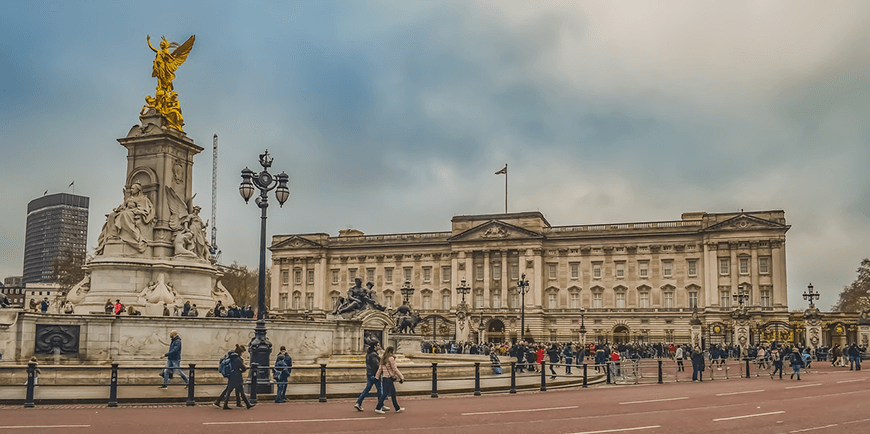
The Tower of London and Tower Bridge
Over the years, the grand Tower of London has been used for many purposes, including the Royal Palace, criminal prison, museum, barracks and armoury. This nine hundred years old, historic castle is situated on the north side of the shores of the River Thames in central London. Inside this iconic building, there is a rich collection of royal arms and armour. It is also known for containing exclusive crown jewels and accommodating many famous and notorious prisoners.
Near the Tower of London, Tower Bridge is a symbolic bridge and one of the most notable landmarks in London. With the intention to ease road traffic while keeping easy access to a main stretch of the River Thames, the bridge with two giant towers of 200 feet was built between 1886 and 1894.
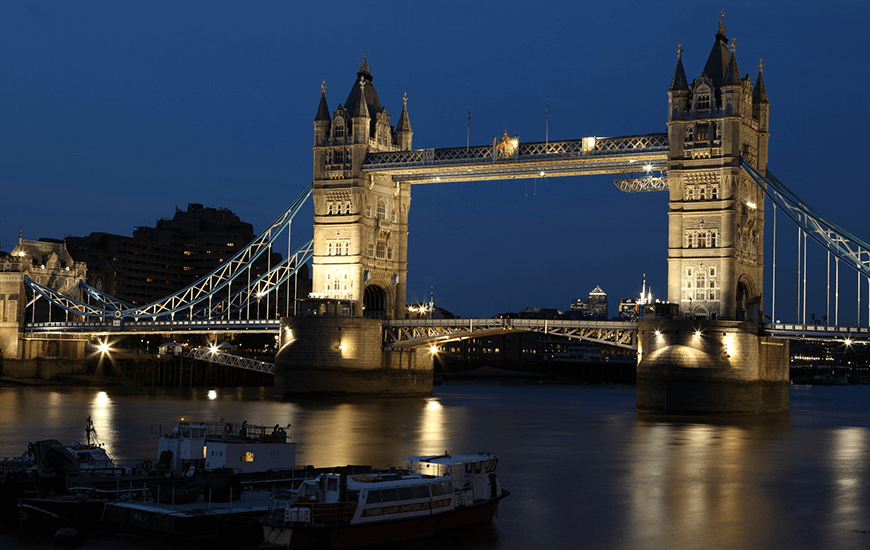
Piccadilly Circus and Trafalgar Square
Situated to walking distance from one another, Piccadilly Circus and Trafalgar Square are two of the most well-known tourist spots of London. Piccadilly Circus, one of the most famous road junctions in the world, marks the irregular intersection of some bustling streets such as Piccadilly, Regent, Haymarket and Shaftesbury Avenue. It is best known for its statue of Eros that stands right in the middle of the circle. Surrounding it, there are a few architectural buildings with advertising Wallscapes.
Trafalgar Square, the renowned public square in Central London, was built with a view to commemorating the Battle of Trafalgar that took place in 1805. It is one of London’s central points for casual meetups or significant cultural festivals. The most important highlight of this square is Nelson’s Column, a tall monument of 169 ft and 3 inches, which was constructed to honour Horatio Nelson who led the British in their famous victory against Napoleon. It has its base or foot furnished with four bronze relief panels, which were formed from seized French guns. The beautiful fountains in Trafalgar Square are also among its attractions.
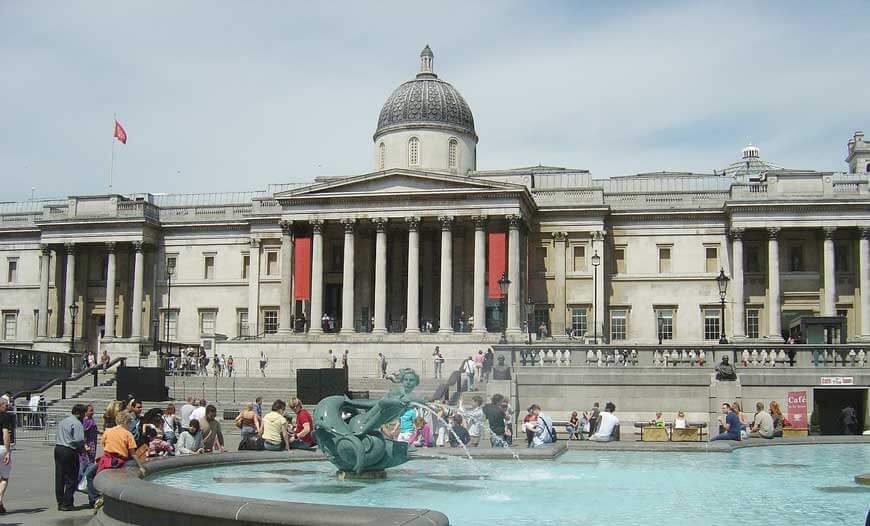
Big Ben and Parliament
Though the name “Big Ben” is often applied to refer to the tower, the clock and the bell, it originally belongs to the Great Bell. Just like the Tower Bridge, Big Ben is an iconic landmark and one of the most noticeable sights of London. It is the focal point of the New Year celebration in London, the United Kingdom. The tolling of this bell is identified all over the world as the BBC radio’s time signal.
The Big Ben is one of the features of the Houses of Parliament or the Palace of Westminster in Westminster, Central London. An example of the Gothic-Renaissance architecture, the Houses of Parliament is the place of the conference of the two parliamentary houses of the United Kingdom called the House of Lords and the House of Commons. Both the locals and tourists are allowed to visit the parliament and watch debates or political arguments from the public galleries.
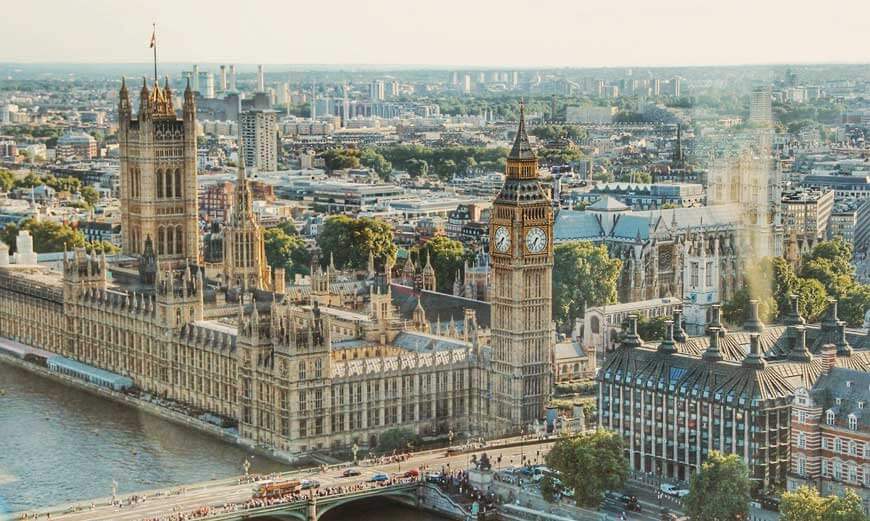
The British Museum
The British Museum is a public museum in London with a massive collection of over 13 million artefacts from the ancient world. It has objects from different antique civilisations or nations such as Assyria, Babylonia, China, Egypt and so on. For any curious individual who wants to discover the centuries-long history and culture of human life, the British Museum is the most ideal place to visit. Among the museum’s most popular highlights, there are the Elgin Marbles from the Parthenon, the Rosetta Stone which played the most important role in reading and understanding Egyptian hieroglyphs, the gigantic statue of Ramesses II which inspired P. B. Shelley’s poem “Ozymandias”, the Egyptian mummies, the Chinese ceramics from the Ming and the Mildenhall Treasure from the fourth century.
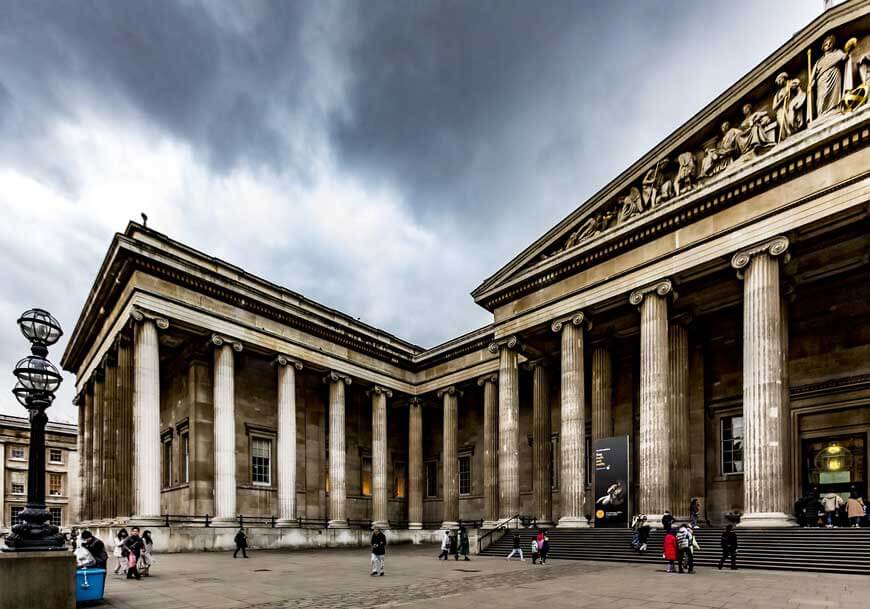
National Gallery
The National Gallery in Central London is one of the oldest, largest and most visited art museums in the world. It contains an extraordinary collection of more than 2,300 artworks dating roughly from 1260 to 1920. Among the most famous highlights of the Gallery is the Fighting Temeraire by J. M. W. Turner, the Hay Wain by John Constable, Sunflowers by Vincent Van Gogh, the Water Lily Pond by Claude Monet, Mr and Mrs Andrews by Thomas Gainsborough, the Ambassadors by Hans Holbein the Younger, the Arnolfini Portrait by Jan van Eyck and the Equestrian Portrait of Charles I by Anthony van Dyck.
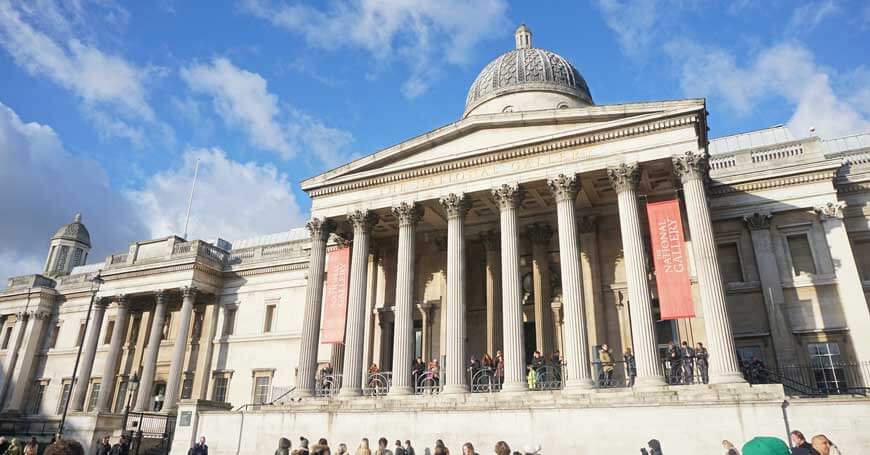
The Victoria and Albert Museum
Named after Queen Victoria and Prince Albert, the Victoria and Albert Museum, usually shortened as the V&A, is the biggest or the largest museum of art and design in the world. Inaugurated in 1852, the museum stands on around 13 acres of land and consists of 145 amazing galleries. It contains a huge collection of more than 2.27 million objects. Unlike the other museums in London, the collection of the V&A is extremely diverse. There are not just art objects such as paintings or statues in there, some other objects of everyday use, including ceramics, clothes and jewellery, can also be found in this museum.
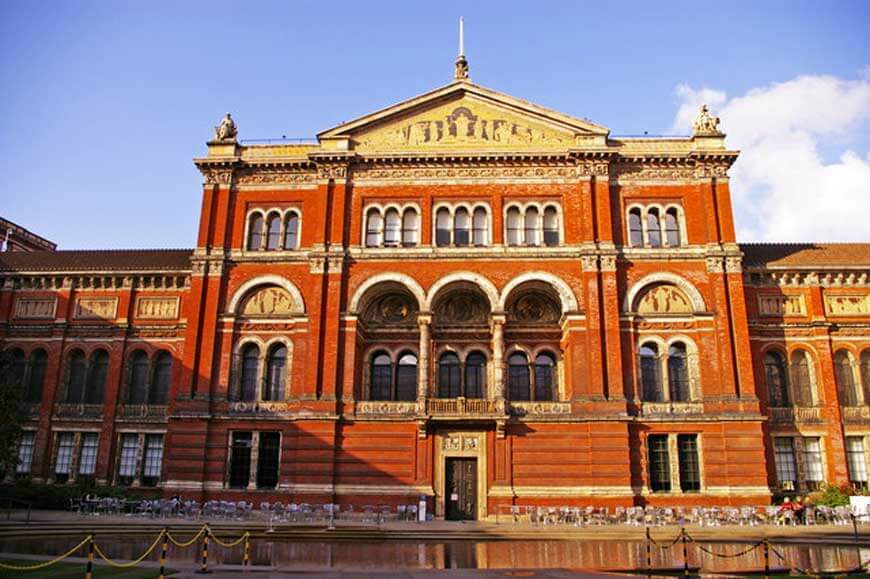
The Two Tates: Tate Britain and Tate Modern
Tate, formerly called the Tate Gallery, is the National Gallery of British Art which consists of a group of four art museums namely Tate Britain, Tate Modern, Tate Liverpool and Tate St. Ives. While both the Tate Britain and Tate Modern is situated in London, the Tate Liverpool is in Liverpool and the Tate St. Ives is located in Cornwall. The Tate was inaugurated in 1897 to store and display significant British arts. As the collection of arts grew, a bit more space became necessary for the proper public display of them. As a result, Tate Britain in Millbank emerged which displays the permanent collection of only historic British arts. On the other hand, Tate Modern, a brilliantly modified power station, shows extensive collections of international modern and contemporary art.
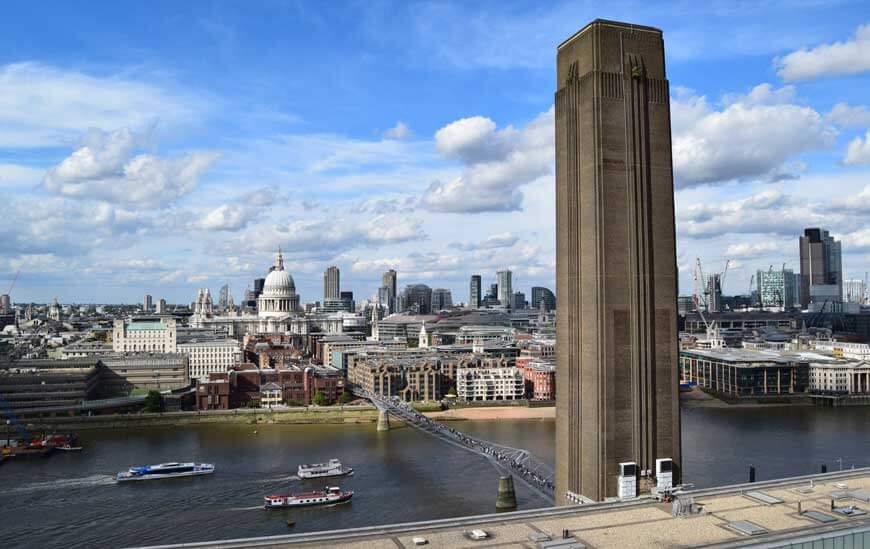
Westminster Abbey
Westminster Abbey officially called the Collegiate Church of Saint Peter, is a Royal church in the City of Westminster, London and one of the World’s Heritage Sites. Since the early 7th century, it has been a religious building serving Christianity. It has also been playing a vital role in Britain’s political, social and cultural affairs for over a thousand years. As a place of funeral, it was established by Edward the Confessor in 1065. Since then, many sovereigns were not only crowned but also buried here at Westminster Abbey. However, nowadays, it has also gained popularity as a site for Royal Weddings.
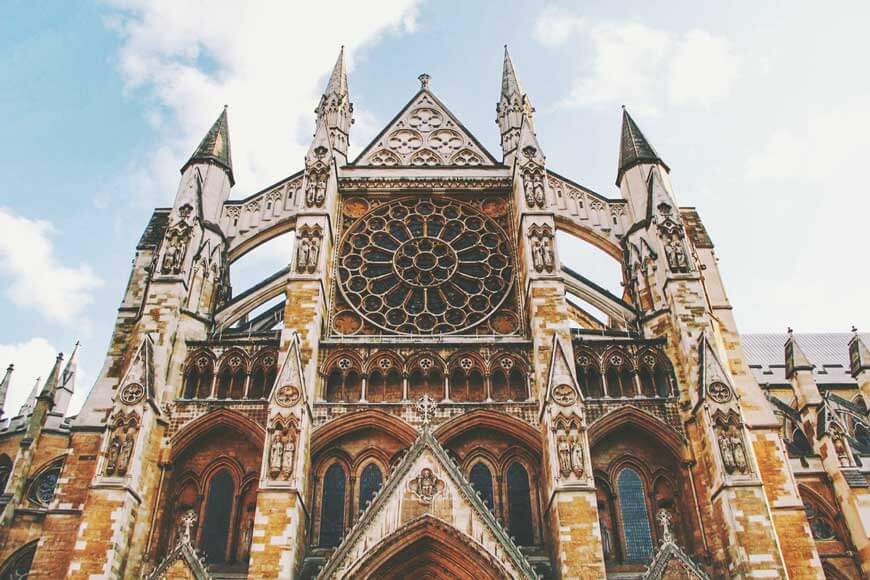
Churchill’s War Rooms
The Churchill War Rooms, a part of the Imperial War Museum, is one of London’s most fascinating and reminiscent historic sites containing the secrets of World War II. It is this nerve centre where Prime Minister Winston Churchill and his war counsellors lived and directed the British army throughout the Second World War. In the museum, there is a small chamber where Churchill rested and an improvised radio station from which his important wartime speeches were broadcasted. Marking the front lines on a map of Europe, the knitting wool of Clementine Churchill brings the history back to life, like no other museum.
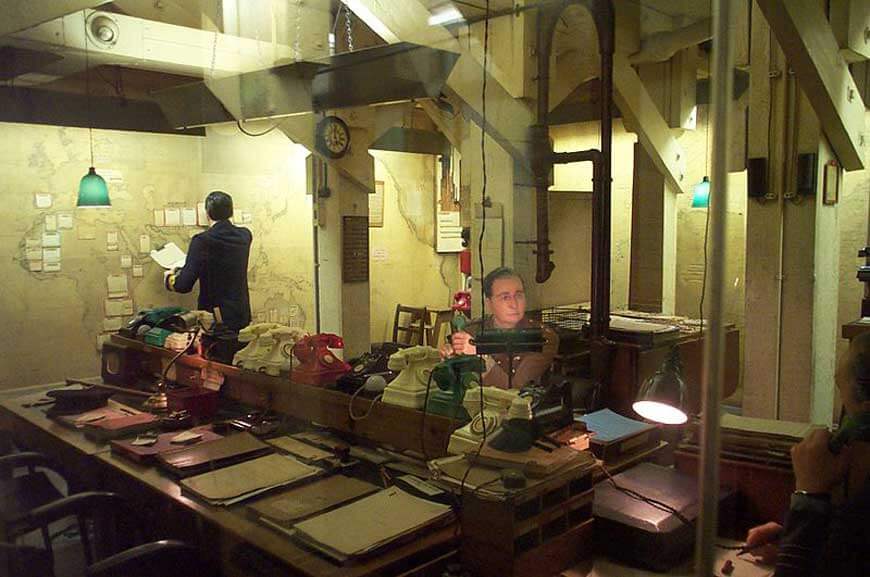
Hyde Park
The largest of the four Royal Parks in central London, Hyde Park covers 142 hectares of green space with numerous trees. It has been an important site for debates, protests and concerts. One of the most notable protests in the history of England led by the Women’s Social and Political Union for the women’s right to vote took place right here in this park, in 1908. Today, the Speakers’ Corner in Hyde Park is still a well-recognised section for public speeches and debates. More often than not, especially on Sundays, you will see people gathering here and having debates or giving speeches on various issues. Split into two by the Serpentine Lake, the park offers boating and swimming. If you wish, you can go jogging, walking and cycling in the open air. There are also plenty of peaceful stations in the park if you are interested in relaxing.
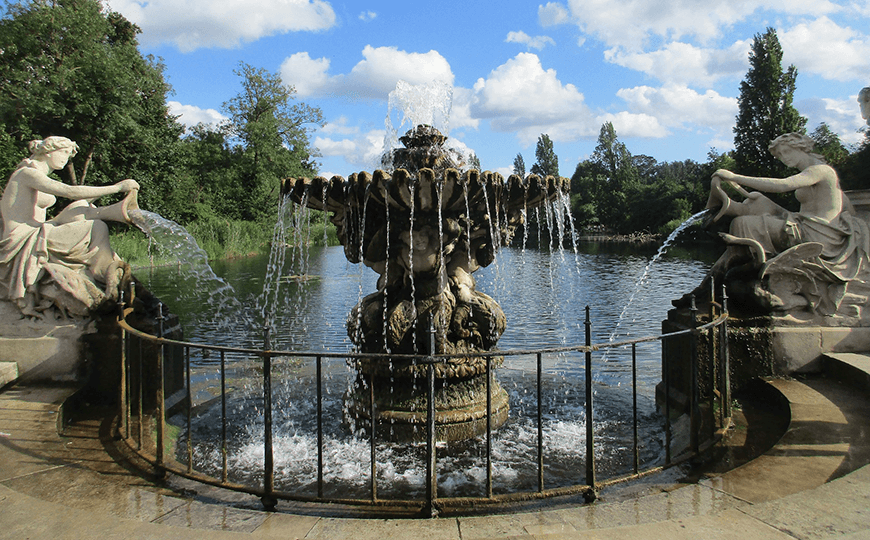
Westminster
Westminster is the government and political headquarters of the Kingdom of England in Central London, with numerous department and ministry offices lining its Whitehall road. The Houses of Parliament, also known as the Palace of Westminster, serves the seat of the two parliamentary houses of the United Kingdom, namely, the House of Commons and the House of Lords. Visitors are allowed to tour this Neo-Gothic building with an expert guide. At the edge of the Houses of Parliament located the Big Ben, one of London’s most iconic landmarks. Although the name is given to the massive bell inside the clock tower, the term is extensively used to mean both the clock and the clock tower. At the northwest end of the Palace of Westminster is Parliament Square, a must-see square with a huge green space and statues of influential figures like Nelson Mandela and Winston Churchill. Also, visit Westminster Abbey, the famous site for royal coronations and burials that houses the tombs of several important personalities including Charles Darwin.
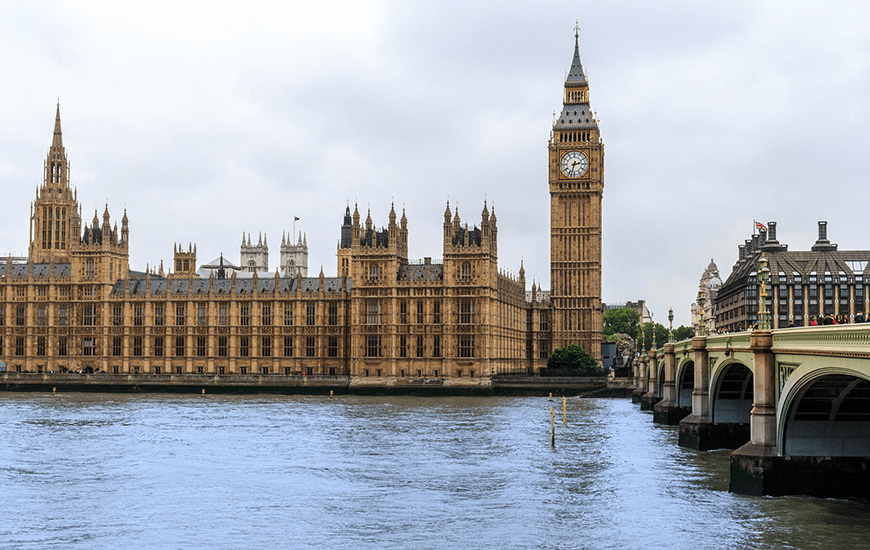
Camden Town
Camden Town, simply called Camden, is a residential district in the north of London. It is a well-preferred destination by both tourists and locals because of its bustling market and vivid culture. The market has more than 1000 shops and stalls that sell various kinds of items including textiles, trinkets, arts and crafts. You can also find a variety of appetising street food in this part of London. Have some pastries, cakes or cookies at Cookies and Scream, a renowned vegan and gluten-free bakery. Nightlife in Camden town is remarkably colourful. At night, its clubs and pubs become venues for live music and other performances. If you have time, walk from Camden Town to Regent’s Park for a memorable experience and do not refrain from meeting a few animals at London Zoo.
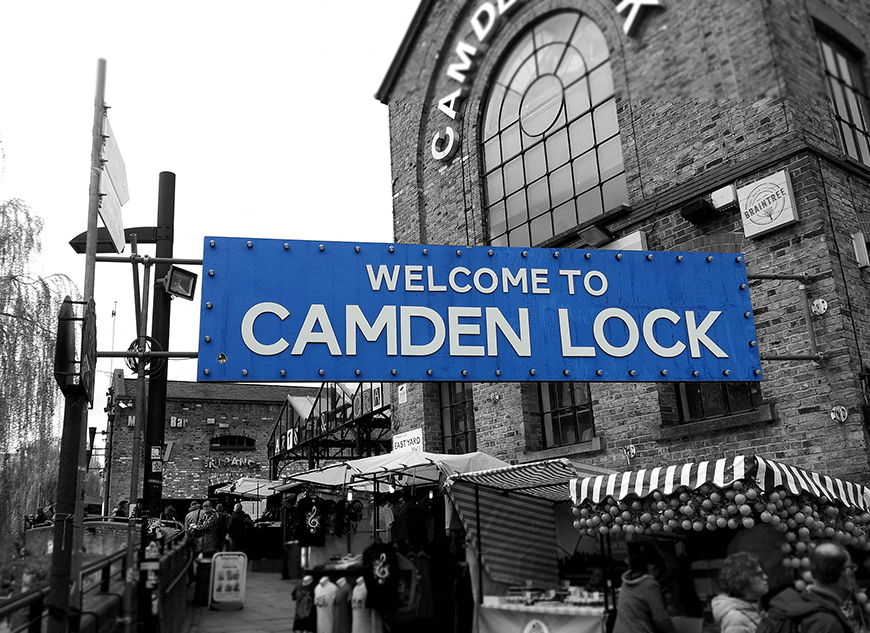
London Eye
The London Eye is a huge observation wheel located on the South Bank of the River Thames in London. With a height of 135 metres, it is counted among the tallest Ferris wheels in the world. It offers visitors a panoramic bird’s-eye view of the city and its landmarks; and, perhaps because of this reason, it is called the “London Eye”. The nighttime view of the iconic Eye is really fantastic. As soon as the sun goes down, the wheel is well-illuminated with colourful lights. It is also a focal point of the New Year’s Eve fireworks show in London.
Your trip to London will be half-done if you do not see the London Eye. If you are not with your partner, you can think of sharing one of the spacious pods with other interested sightseers. Plan your tour to the London Eye in such a way that in a single visit, you can hit the neighbouring London Aquarium, which displays a variety of sea creatures like jellyfish, seahorses, sea turtles and sharks.
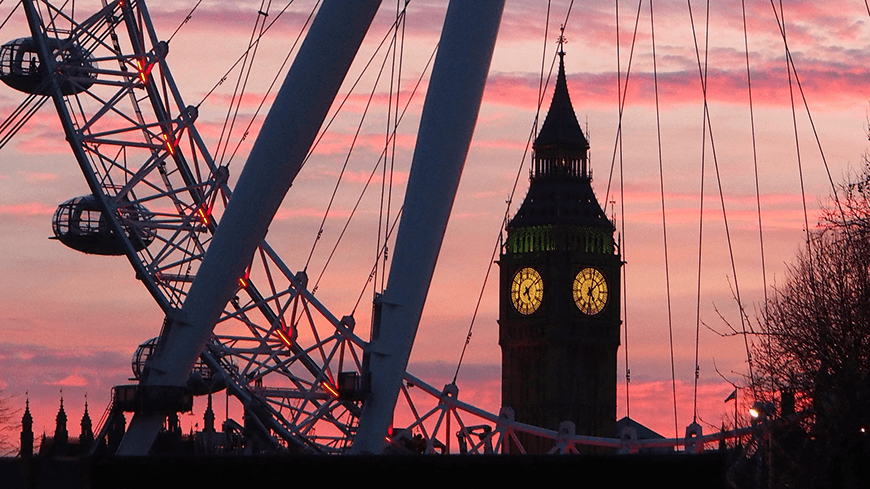
Hampstead Heath
Covering a vast space of 320 hectares, Hampstead Heath is regarded as one of the most extensive as well as the most loved parks in London. This large heath is also considered to be one of London’s highest points, granting extraordinary city views from Parliament Hill. The area encompasses woodlands, hills and meadows, which shelter various species of birds and animals, including snakes, butterflies and bats. Therefore, it is widely accepted as one of the best sites to experience nature and wildlife in London. The Heath also has some swimming ponds, where you can get the experience of outdoor swimming. History devotees can hit Kenwood House, a 17th-century stately house on the northern boundary of Hampstead Heath holding historical artworks.
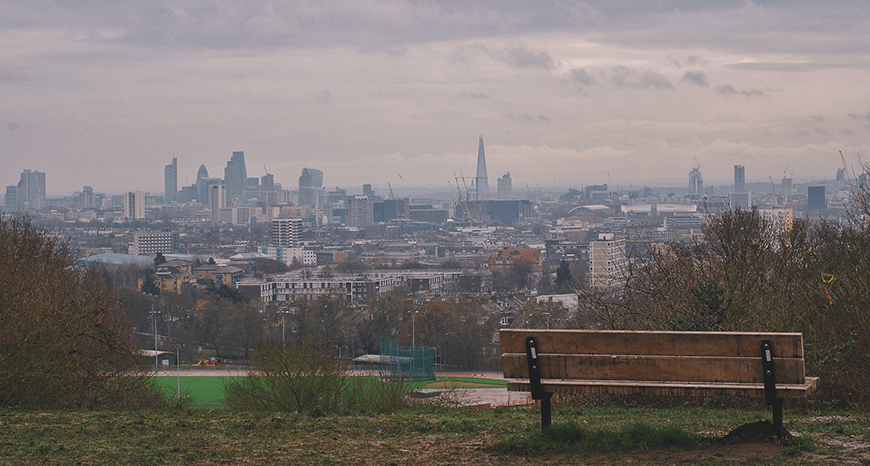
British Film Institute (BFI), London
For movie freaks, London has BFI Southbank, the leading movie theatre in the region which is operated directly by the British Film Institute. After walking around the city and exploring its attractions, many choose this place as their ultimate spot to relax. This four-screen repertory cinema venue shows an immense collection of classic and contemporary films in both English and non-English languages. The theatre has a library, which is a great place for studying and learning about the history of cinema. It also features a few riverside cafe bars and restaurants, where you can sit back and relax a bit while having your meal or sipping on your drink and enjoying spectacular river views.
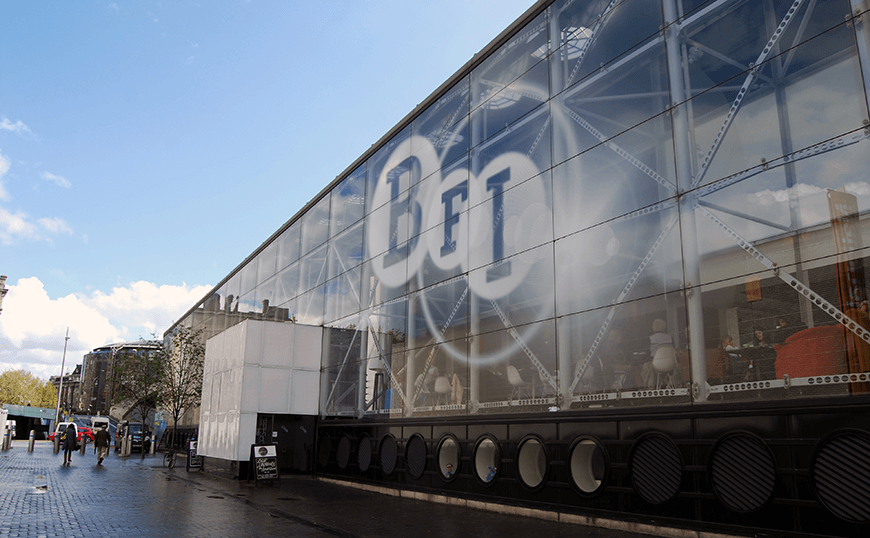
Thames Cruise
The River Thames, designated as the lifeblood of London, is one of the most remarkable waterways in the world. It is known to be the longest river in England and the second-longest in the United Kingdom. Flowing through the hustling English capital of London, the historic river served as a significant base of operations in the notorious World Wars. Over the years, it also has been playing the most crucial role in bringing industry to the capital.
The iconic Thames is itself a tourist attraction and it facilitates a fantastic way to see the city and some of its major attractions such as Tower Bridge, Shakespeare’s Globe, the Houses of Parliament and the London Eye. Several companies in London offer sightseeing cruises and all you need to do is: book a cruise on the River Thames with the company of your choice and enjoy the ride. Night cruises are also available to all. Thus, any interested sightseer can take a Thames river cruise at night to see the sights when they are all lit up.
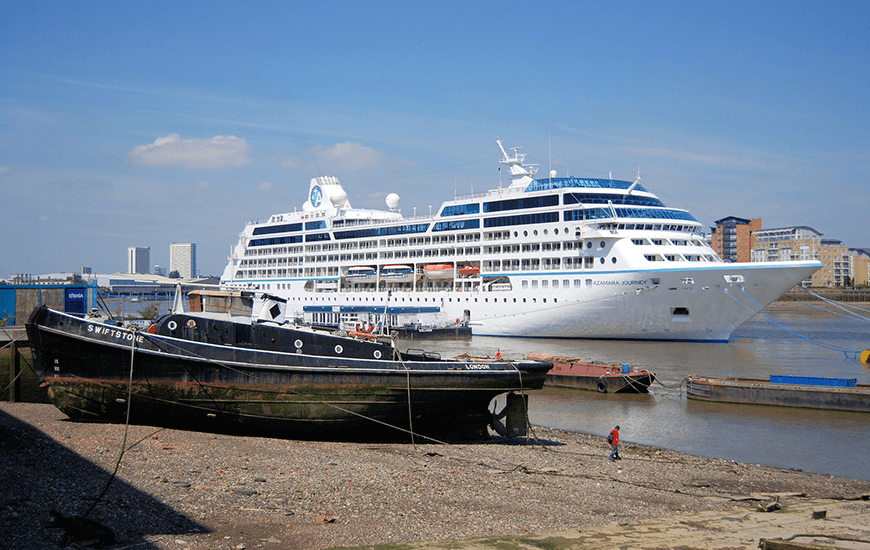
Baker Street
Named after the builder William Baker, Baker Street is one of the most well-known streets in London. Arthur Conan Doyle, the creator of the fictional detective character Sherlock Holmes, made the street famous by mentioning ‘221B Baker Street’ as the home address of Sherlock Holmes. Today, at this location, you will find the Sherlock Holmes Museum, a privately operated museum dedicated to the life and period of the literary character Sherlock Holmes. A number of notable sites are situated close to Baker Street. Head to the Madame Tussauds, a renowned wax museum with over 250 lifelike wax figures of famous celebrities, and take photos with the wax replicas of your favourite celebrities. You can also visit the nearby Regent’s Park and climb up Primrose Hill for Panoramic Views of the city.
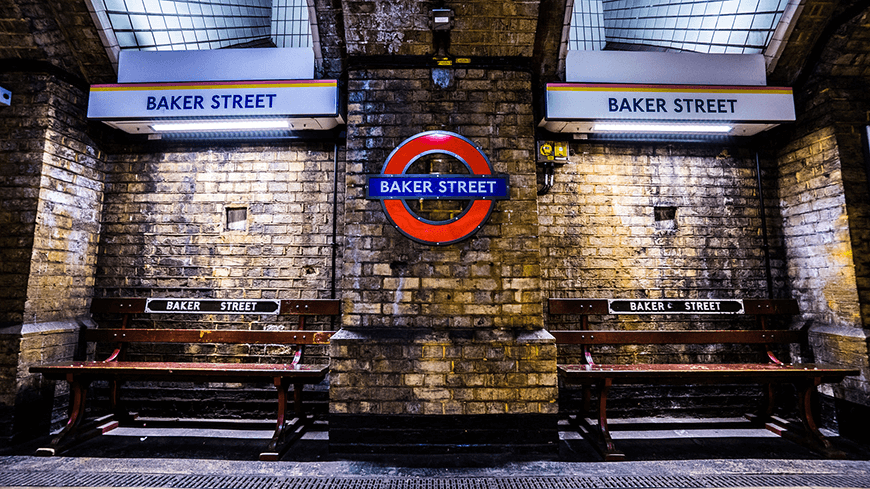
Brixton Academy
The city of London is full of venues for live music shows. At night, stop by any open nightclub or a pub to meet and listen to some quality musicians. The O2 Academy Brixton is one of the most top-rated music venues in south London, England. Inaugurated in 1929, it was initially just a cinema and later in 1983, it was transformed into a live music venue. Now, with the capacity of 4,921, the Academy hosts live pop and rock acts, comedy shows, club nights and so on. The Clash, Sex Pistols, New Order and Madonna, are some of the notable acts that have been played at this venue. The Academy also hosted the final ever performance by the Smiths. Overall, if you are looking for some live entertainment, this well-loved venue should be your ultimate destination.
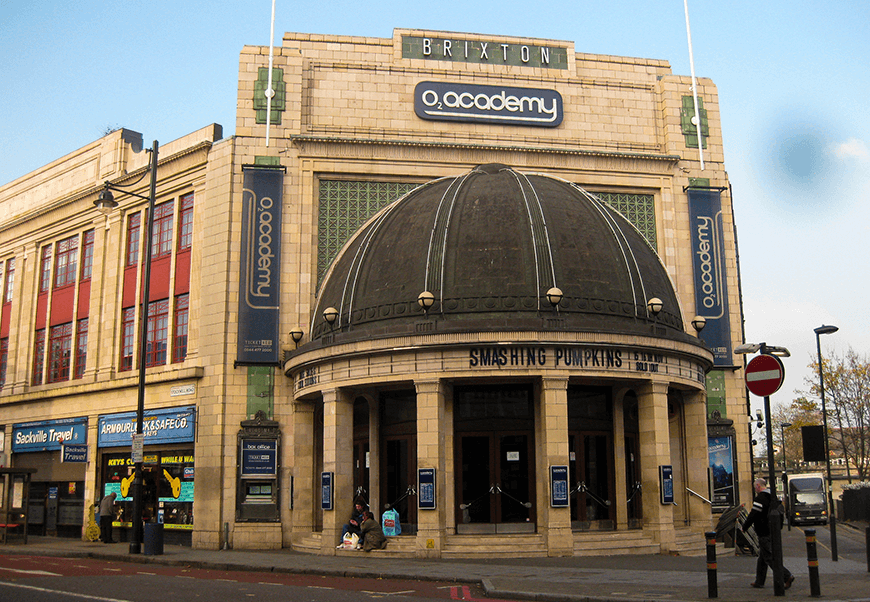
Piccadilly Circus, UK
Piccadilly Circus is a bustling road junction and a large open space in the heart of London. Since its construction in 1819 with the intention to join Regent Street with Piccadilly, the square has been a spot full of activities. The bright lights and neon advertising screens make it a bit comparable with Times Square in New York. Piccadilly Circus offers smooth access to some of the notable theatres and nightclubs, like the Criterion Theatre, in London. This popular meeting place is home to the Shaftesbury Memorial Fountain with a statue on top of it, which is widely believed to be the statue of Eros. Placed here towards the end of the nineteenth century, the fountain is recognised as the central attraction of the square. Do not forget to stop by Ripley’s Believe it or Not museum at Piccadilly Circus to learn about some unbelievable facts and mysterious stuff that you have never seen or heard of.
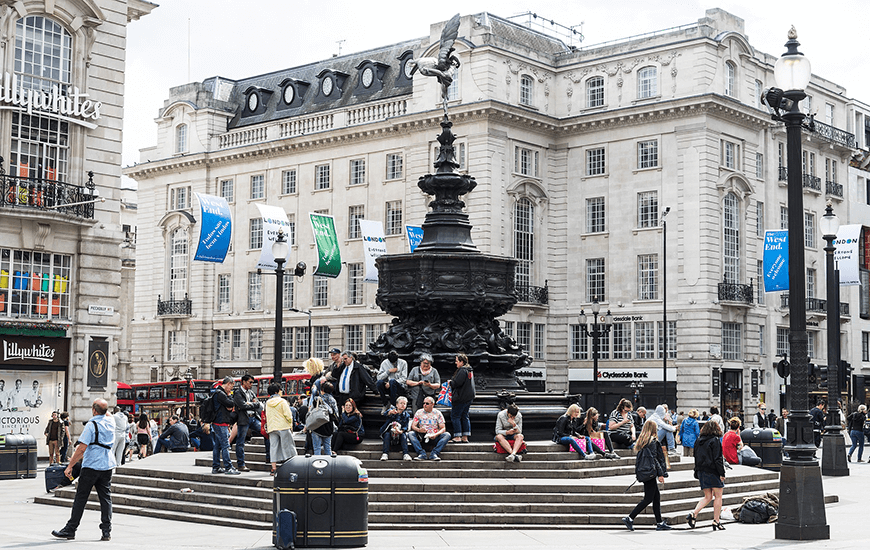
Art Galleries, UK
For lovers of art, London is a must-visit destination. The city has some of the best art galleries in Europe showcasing classic and contemporary art, painting, graffiti, photography, illustration and more. Almost all of these art galleries are free, meaning: you don’t have to pay to enter and look around. The National Gallery in Trafalgar Square is probably London’s most popular art gallery, with an extensive selection of more than 2,300 paintings dating from the 13th to the 19th centuries. Since it contains some masterworks by renowned artists like da Vinci, Turner, van Gogh and Rembrandt, people generally choose it over any other art gallery in London. Likewise, the Tate Modern on the Southbank is a must-see art gallery, displaying artworks by world-famous painters such as Picasso, Klee and Delauney. The Saatchi Gallery, a contemporary art gallery, is also listed among the major art galleries in London, which you should not avoid visiting.
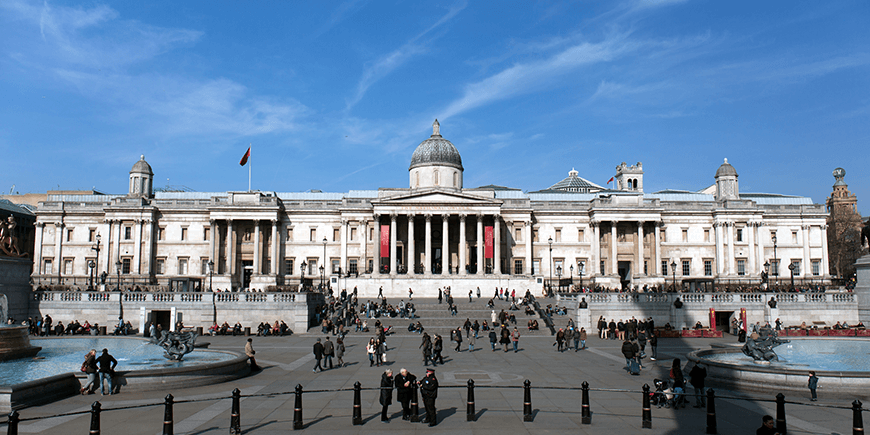
The O2, London, England
The O2 is a functional entertainment venue, which is situated in the southeast of London, England. Originally built to celebrate the millennium, the dome-shaped structure used to be called the ‘Millennium Dome’ and was utilised as an exhibition centre for various exhibitions and hands-on activities fundamentally focused on children. Now, it is one of the largest and choicest venues in the UK for live music, comedy shows, sporting events, exhibitions and more. For movie lovers, it has a Cineworld cinema and for foodies, it has several bars and restaurants that serve various world-famous meals. If you are looking for a place to hang out with your friends, you can surely pick the O2. You can also climb up to the roof of the O2 and enjoy stunning views of the city while you do so. For excellent city views, another option is to take the Air Line cable car across the water.
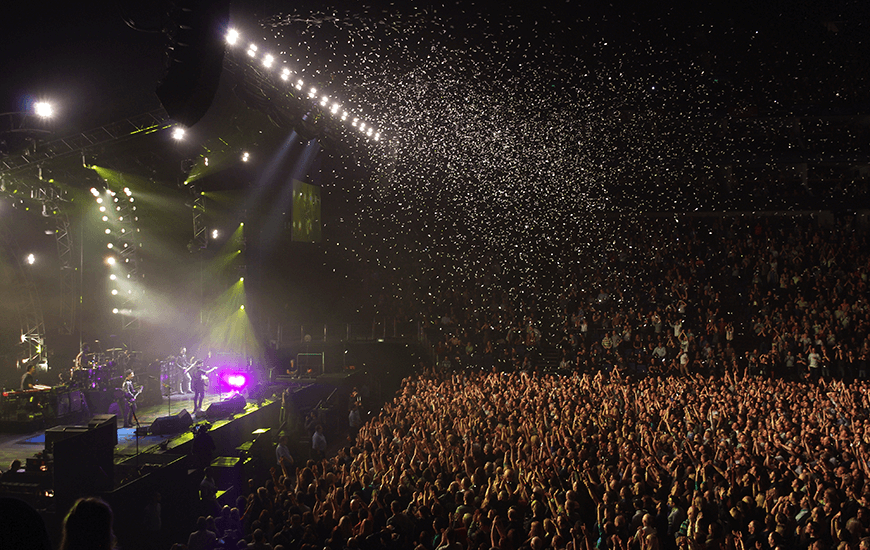
Oxford Street, UK
Oxford Street is one of the most well-known roads in the West End of London, offering a unique shopping experience. With about 300 shops and more than half a million regular visitors, it has been widely rated as the most bustling shopping street in Europe. In the shops of various renowned brands at Oxford Street, you will find loads of things to purchase such as clothes, shoes, accessories and gifts. If you ever stop by Oxford Street, do not disregard checking out the world-famous department stores like Debenhams, House of Fraser, Selfridges and John Lewis & Partners, and toy stores like Disney Store. For an amazing outing, try to visit the place during Christmas time, when the entire Oxford Street is lit up with colourful Christmas lights.
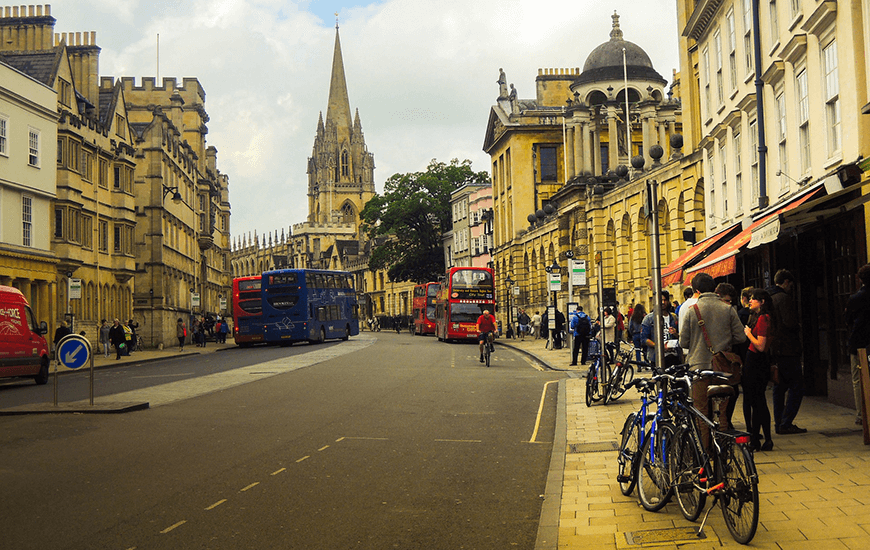
Buckingham Palace
Placed in the City of Westminster, Buckingham Palace is the London home as well as the administrative centre of the British royal family. Since 1837, it has been serving the monarchs of the UK as their official London residence. It has also been the nerve centre for the English at the events of both national festivity and crisis or grief. The palace has the most capacious private garden in London and it contains 775 rooms, including the opulent private imperial bedrooms. You can tour the private and staterooms, which are open to the public, in order to sense the royal lifestyle. No matter what, do not miss to watch the Changing the Guard, which takes place outside Buckingham Palace on certain days from 10.45 am and lasts approximately 45 minutes, with the actual handover happening at 11 o’clock in the morning.

Museums
Noted for its diverse culture, the city of London is packed with enough museums to satisfy your cravings for history, art and culture. It is, in fact, home to some of the best museums in the world. Most of these museums in London charge no entry fees. So, without worrying about money, you can view everything that’s inside and enjoy to the fullest extent. With so many museums, it is pretty hard to choose one over the other. You can start your venture with the British Museum, which has a huge collection of rare and historical artefacts, including ancient Egyptian mummies and Greek sculptures. While this museum is focused mainly on human history, the Victoria and Albert Museum (V&A) is dedicated to cultural history. What the Victoria and Albert Museum has within is designated as the world’s biggest collection of decorative arts and design. To gain knowledge about the natural world and its history, there is no other better place to hit than the Natural History Museum, which houses an enormous collection of natural history specimens. Nearby, there is a noteworthy museum of science and invention called the Science Museum. Known worldwide for its state-of-the-art interactive expositions, the museum gives an idea about scientific advancement throughout the years.
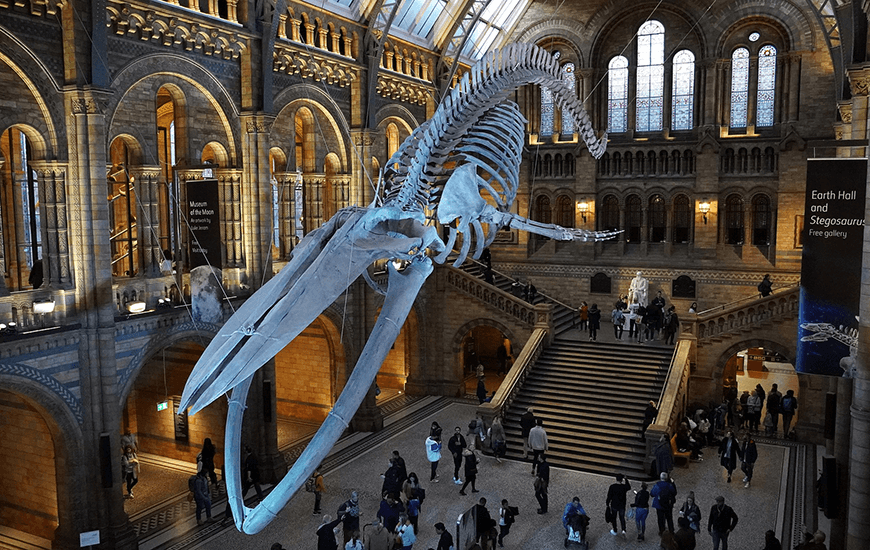




Comment (0)